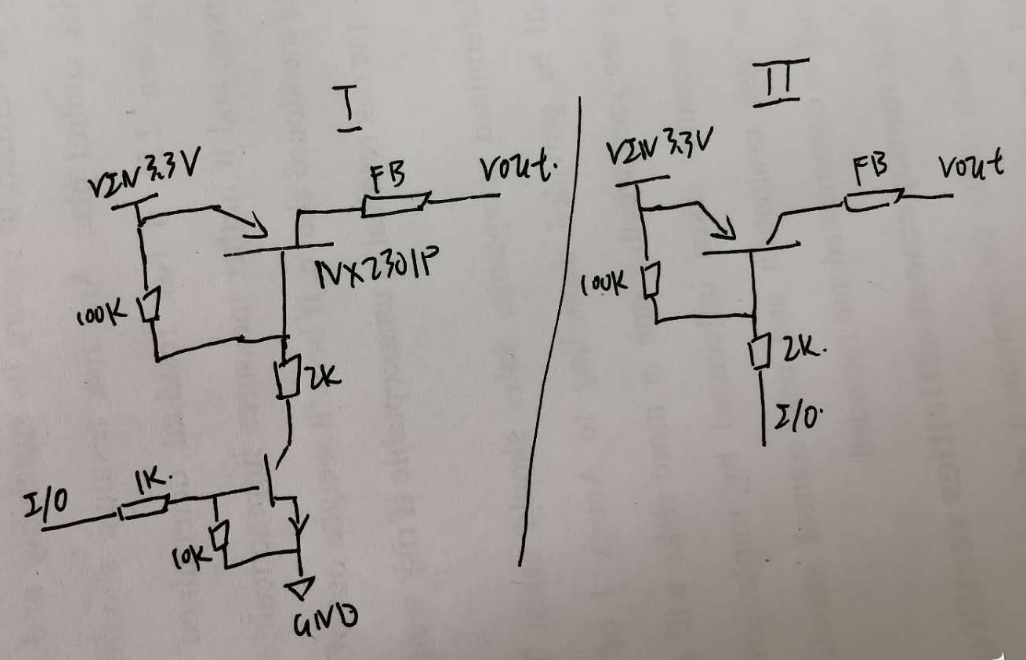
Both of these circuits control power through the I/O port of the microcontroller. What is the difference between these two methods?


Arie ポストする July 6, 2020
The scheme on the left (NPN transistor) is correct.
When I/O is low, NPN can be cut off reliably, as if the lower end of the 2k resistor is disconnected, the switch tube is cut off reliably, and the power supply can be cut off reliably.
When the I/O level is high (it does not need to be too high), the NPN is reliably turned on to ground, the switch is reliably turned on, and the power supply is turned on reliably.
The plan on the right seems to work.
When the I/O level is low, the switch can be reliably turned on, and the power supply can be turned on reliably.
However, when the I/O high level is not high enough (not very close to Vin, which is very common), the switch tube cannot be reliably cut off, resulting in the power supply cannot be reliably turned off.

Ivey ポストする July 6, 2020
The picture on the left is an unqualified design, and the picture on the right is a good design. The 100K resistor is too large.It is recommended to replace it with a 10K resistor and the base of the sliding arm can be adjusted.
I won't elaborate on the specifics, but wait for someone to write detailed data to see.

Aly ポストする July 6, 2020
I usually use the circuit on the left. If I use the picture on the right, the IO must be kept at a high level when the microcontroller is sleeping to turn off the power.